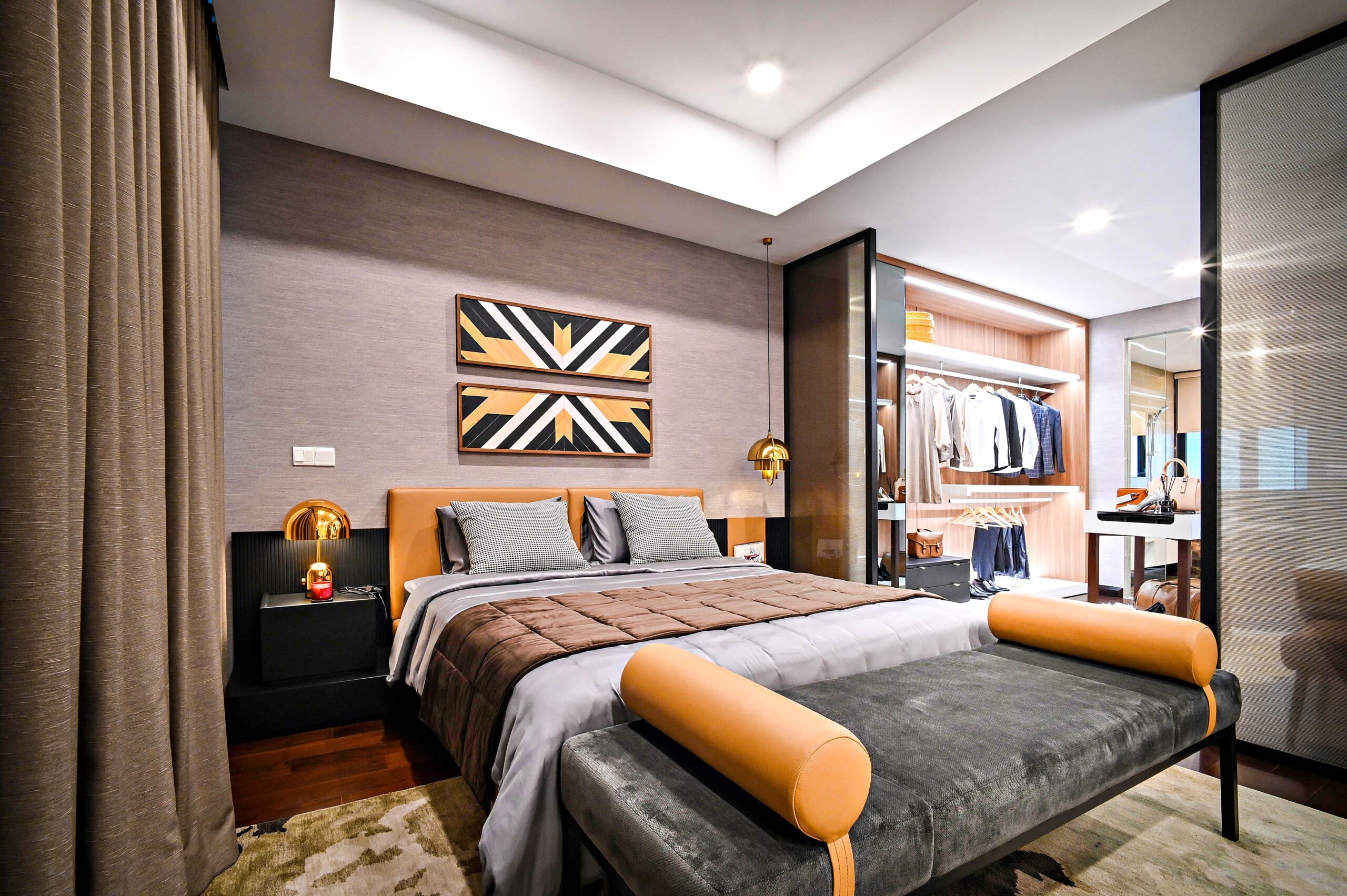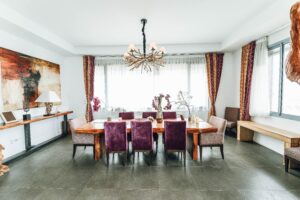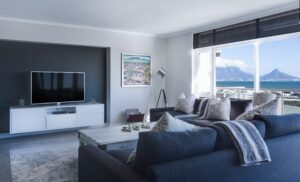Basic Definition of Dining Area
A dining area is a space used to consume meals with family and friends. Typically, a dining area is furnished with a dining table, chairs for seating, and a convenient space for serving meals. The dining area can be combined with the kitchen or separated from it to be designed in conjunction with other areas such as the living room. The purpose of the dining area is to provide a comfortable and convenient space for people to sit and enjoy meals together. [1]
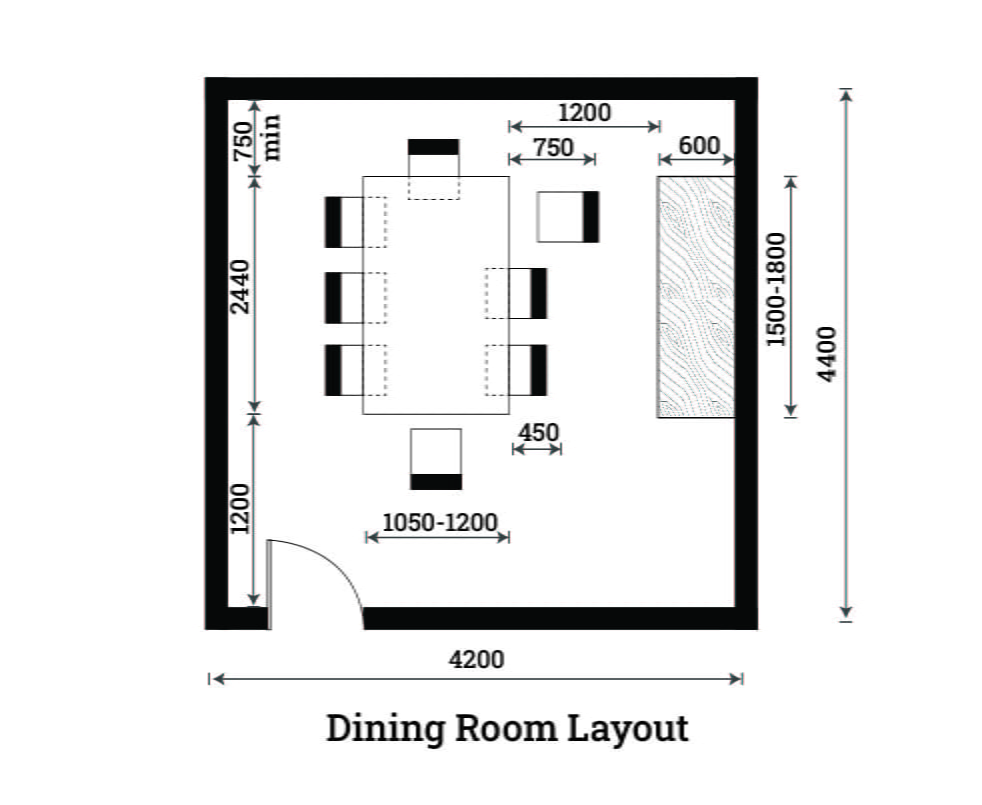
Suitable location of the Dining Area
Dining areas are generally oriented to the south or west. If you prefer a separate breakfast area, then the desired location for the dining area is south or east (locating it toward the east will bring the morning sun inside the space) [3][4] The desired location for a separate lunch area is to the south or west to take advantage of the sun later in the day. [4]
Location of the dining area as per Vaastu
As per Vaastu, the suitable location of the dining area should be in the west; placing it in this direction has many advantages. The dining room is recommended to be connected to the kitchen on the home’s east, west, or south side. [6]
Types of Dinning Area based on the layout
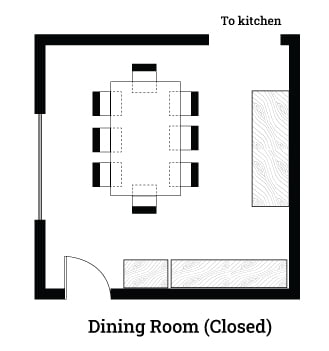
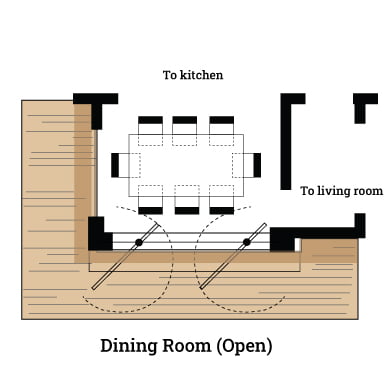
Dining room standard dimensions should be 3600 x 4200 mm to 4200 mm x 4800 mm (12 x 14 ft. to 14 x 16 ft.). [5]
Dining room dimensions for bigger space can be of 4200 x 7200 mm (14 x 24 ft.).
A reasonable layout of a dining area accommodating eight people (with circulation and storage space) occupies an area of 12 m2. [4]
The design and layout of a dining area are determined by the needs of the client as well as the size and shape of the dining table used. A layout can be designed in a closed space with four walls or in an open space with a bigger opening and ambient space.
A dining area attached to the kitchen and living room is a very good design, according to me. as it offers a connected gathering space for the user and has several positive impacts on the inhabitants. The dining room standard dimensions can be good if this layout can’t be designed.
Design Parameters for the Dining Area
The dining area should be designed to accommodate users for eating, sitting, serving, and possible storage options. Furniture can be chosen to meet the user’s needs and fulfill other requirements like studying, playing, etc. A table space of 550–600 mm (22 to 24 inches) is required per person for the crowded sitting. [2]
Principles for designing factors for the dining area
- Number of people to be seated
- Space used at the table
- Space required for chairs and circulation
- Size and shape of the dining table
- Seating arrangement
- Additional storage options [1]
Selecting the dining table for dinning area
Dining tables have several options for different sizes, shapes, and heights. We can choose any shape and size based on the needs and desires of the user. But while going with it, we should consider the available area and design of the dining area.
To comfortably eat on a dining table, a user requires an area of 600 x 400 mm (24 to 16 inches) (of table area).
The center of a table should have 200 mm (8 inches) of clearance for the plates, pots, bowls, and other utensils.
A comfortable round dining table has a minimum diameter of 900 mm (36 inches) and a preferable diameter of 1100 mm–1250 mm (44 inches-50 inches). [3]
Furniture clearance inside dining room
To ensure adequate space inside the dining area, the convenient use of furniture is preferred. The following are the standard clearances, which should be followed for good design and circulation:
- 900 mm to access the chair
- 950 mm for chair access and passage
- 1050 mm for serving meals from behind the chair
- 600-750 mm for circulation
- 1200 mm between the table and the base cabinet (in case; dining with kitchen). [1]
Convenient access should be provided to doors, windows, electric points, and other elements. [2]
To know more about standard dimensions of dining room furniture click here. (You can also download these CAD Blocks, FOR FREE):-
Ergonomics/ Standard dimensions related to Dining area
The ergonomics of the dining area can be fulfilled by taking care of the basic facilities and comfort of the users. Below are some standard dimensions for furniture clearance and seating arrangements. The dining area is a family space, and it should be designed in such a way that it meets all of the user’s comfort and needs. (Source: Neufert, Timesavers, Metric Handbook, etc.)
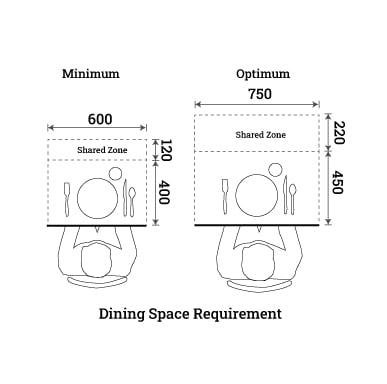
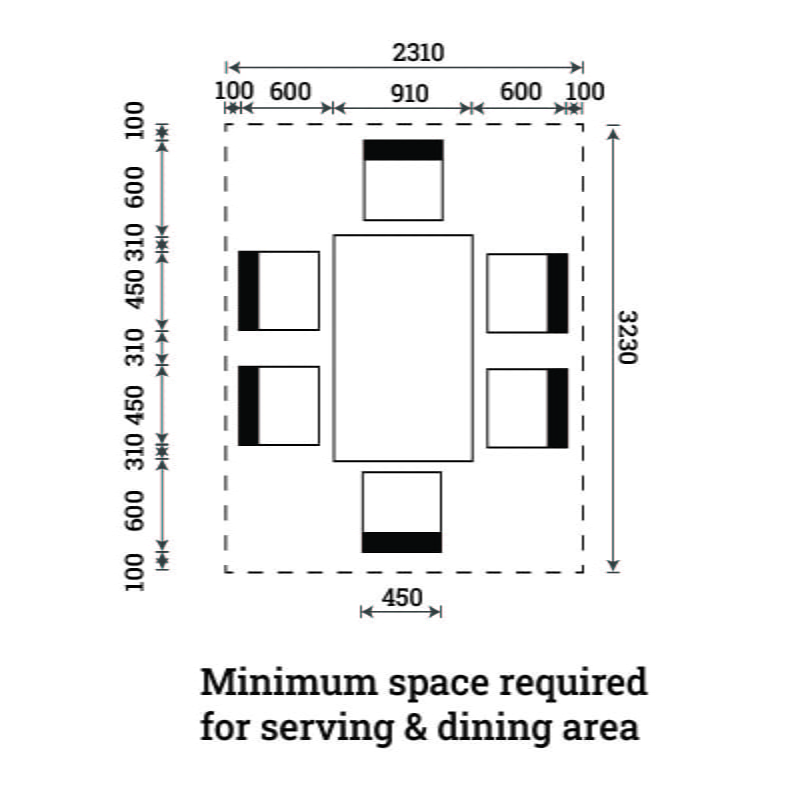
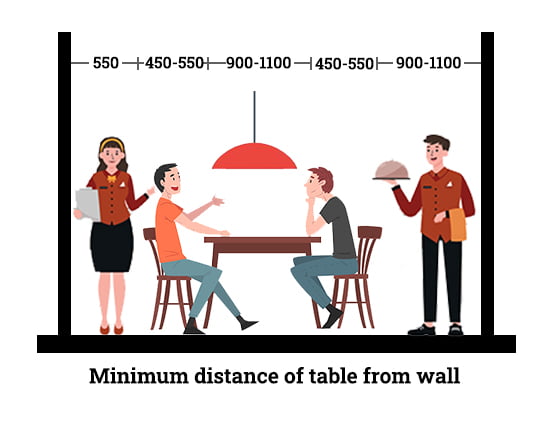
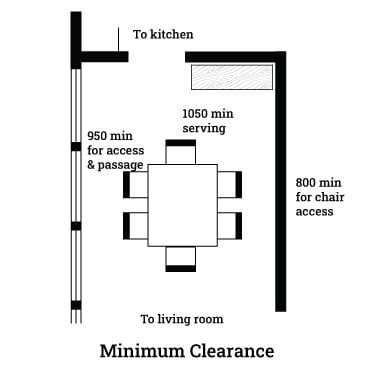
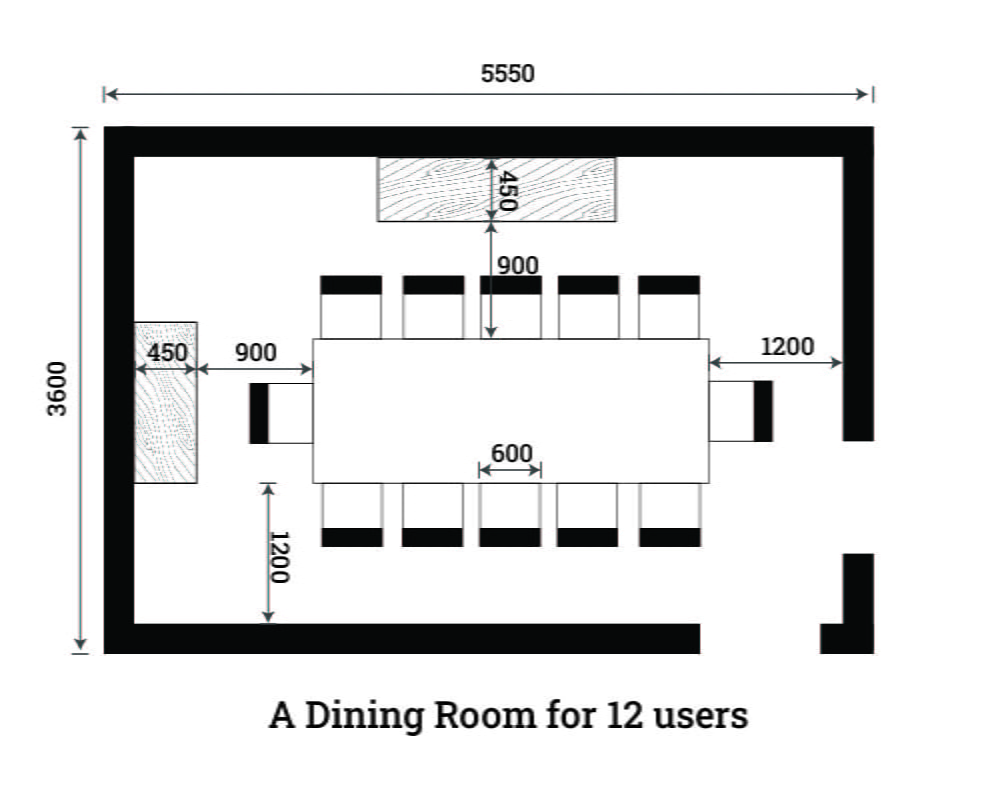
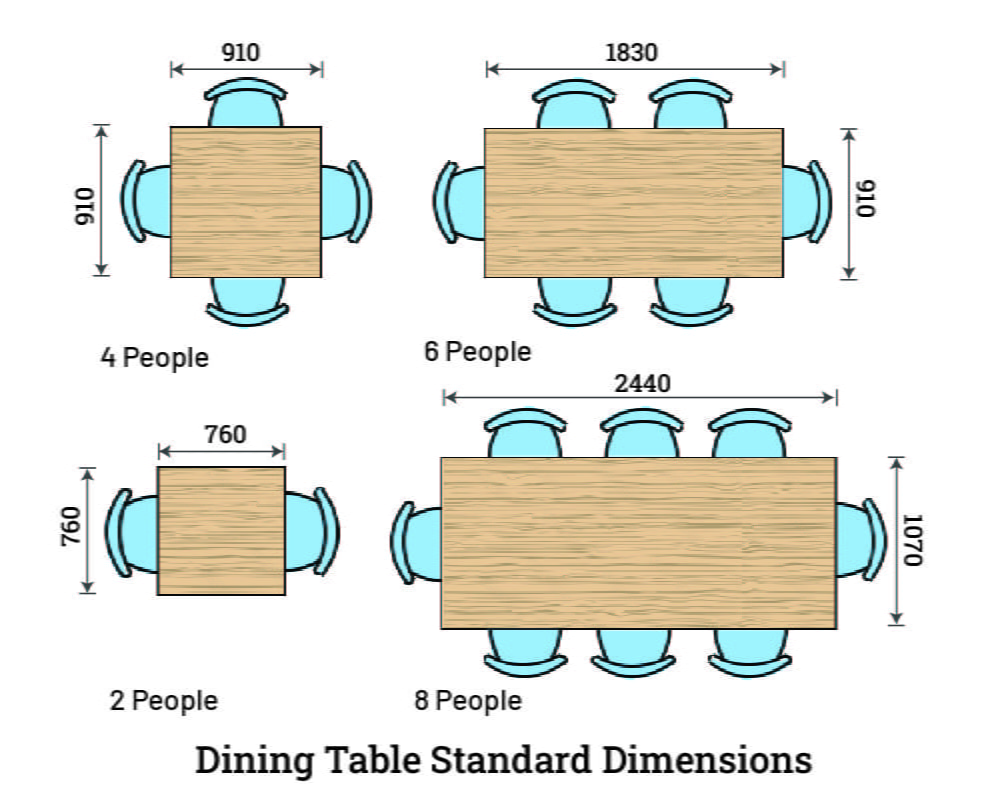
Avoid mistakes while designing the Dining Area
Poor circulation
There’s nothing worse than not giving the user enough space to freely move around in any space. The circulation needs to be smooth; it should not collide with any furniture, and there should be good clearance from the furniture. A minimum of 600–750 mm (24 to 30 inches) of space is required for one person to move freely.
Ignoring the position of the window
The position of the window is a deciding factor in the good design of the living area because the window is connected to many benefits like view, air, and natural light. Windows provide a sense of connectivity to the outside world for a user. Good surrounding views, proper air with cross ventilation, and natural light are the benefits we get if the position of the window is good.
Choosing incorrectly sized furniture.
The furniture did more than just fill a space; it met our needs and provided numerous benefits. Wrong-sized furniture does not just affect the design; it all creates chaos for the user. That is for the standard dimensions of the furniture to be followed for a good environment in any space. A clear space of 900 to 1200 mm (36 to 48 inches) is needed for using any furniture.
Decoration and ornamentation
A dining table is extremely valuable to family members because it allows them to eat together while forgetting about the outside world. It should be growing and have a pleasing appearance. So decorating it well can give them a sense of belonging and connection to the space. It is critical to choose the best materials and décor for the dining area.
Connecting the space to the outside world
Ambient sitting and an opening should be there for the dining area; openings are beneficial to the user because they provide a great view and cool air inside. You should opt for a full-length window.
A Question from the Readers

Comment your answers below…
*Note: The dimensions written in feet, inches and mm are individual dimensions, not converted. Also all the dimensions written on the images are on mm (millimeters).




